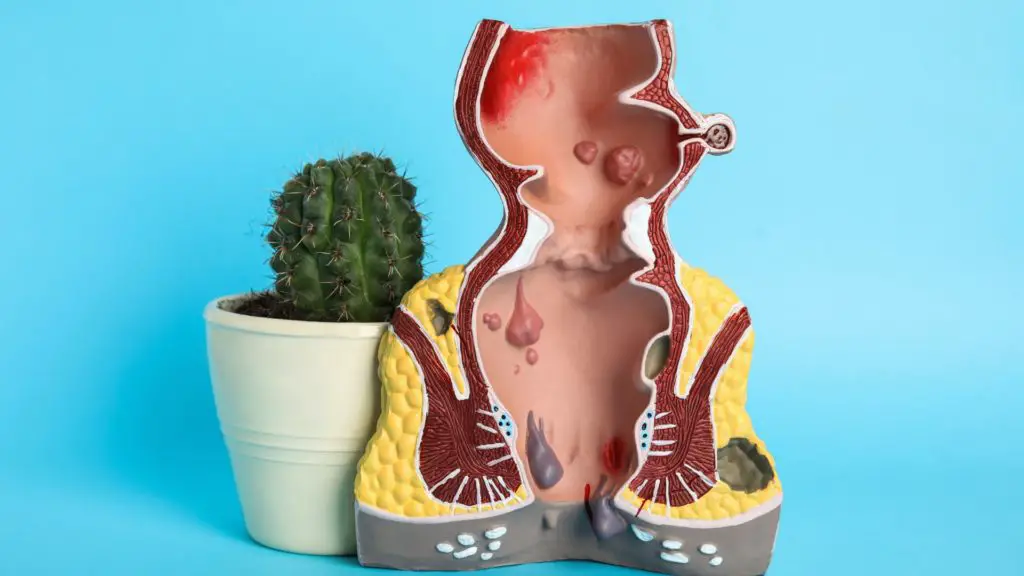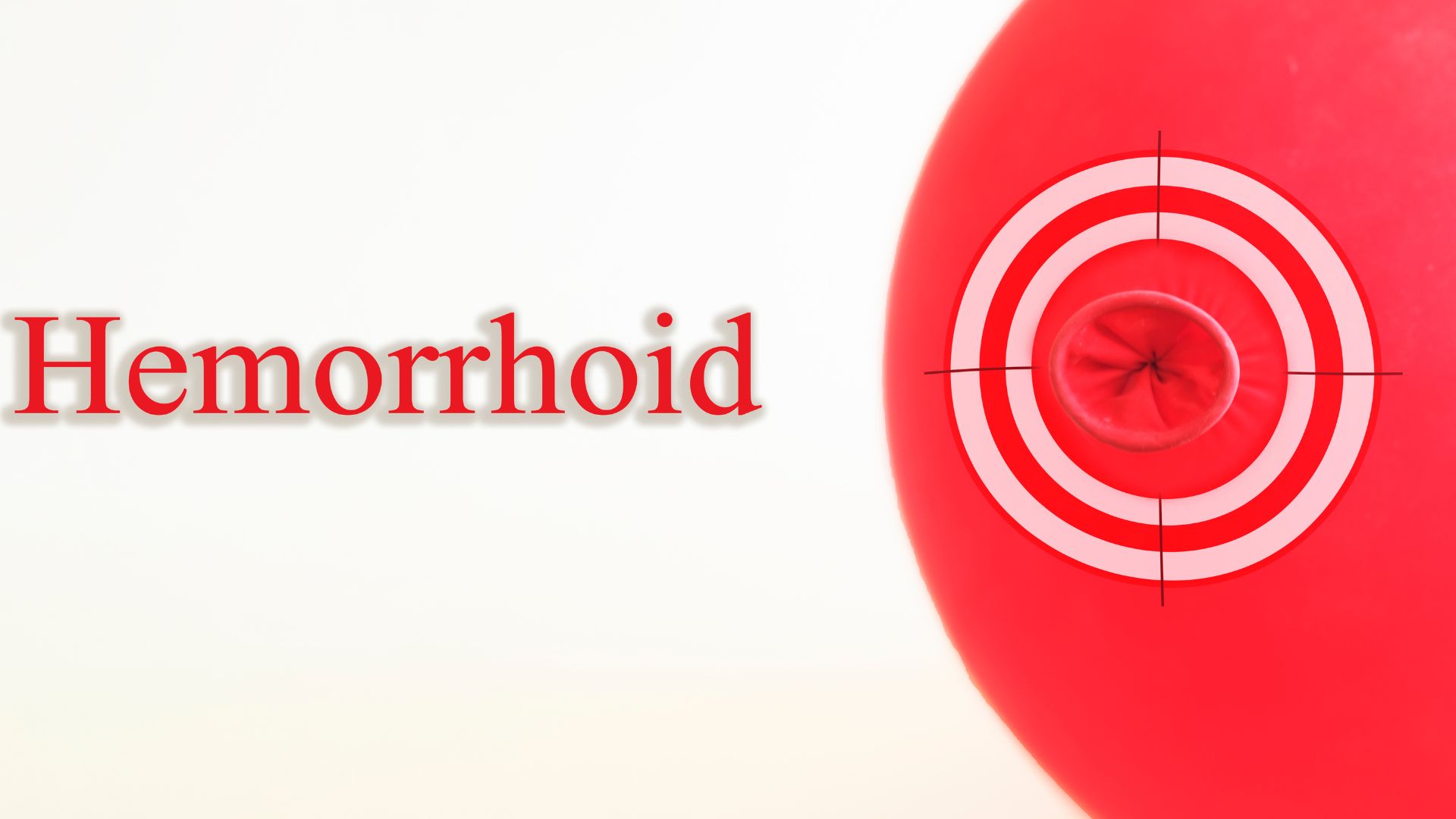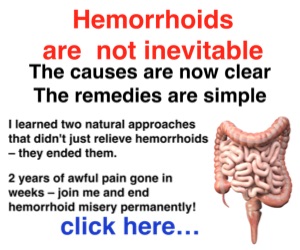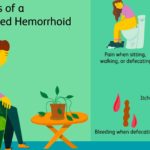Hemorrhoids on anus, known also as external hemorrhoids are cushions of richly vascularized tissue, present in the terminal part of the rectum , near the anus . Under certain circumstances, these structures can become inflamed and swollen beyond measure, becoming visible to the naked eye.Shutterstock
The dilation and inflammation of external hemorrhoids predispose to prolapses, bleeding and thrombi , that is, the formation of blood clots inside them. In all these cases, we speak of haemorrhoidal or haemorrhoidal pathology .
In the early stages, external hemorrhoids appear as turgid, painful bumps that protrude from the anus, accompanied by burning and itching.
The factors that contribute to the inflammation of external hemorrhoids are different and include chronic constipation , excessive pressure to evacuate, long stay sitting on the toilet, pregnancy and an unbalanced diet.
While not a serious disease, external hemorrhoids shouldn’t be overlooked. In fact, milder cases can be treated with the topical application of drugs with a decongestant action . However, worsening of symptoms associated with external hemorrhoids may require surgery.
How can we distinguish emorrhoids on anus
External hemorrhoids are cushions of spongy vascular tissue, formed by capillaries , arteries and, above all, veins . When swollen, painful and / or bleeding, these structures indicate the onset of haemorrhoidal disease.
From the anatomical point of view, external hemorrhoids are located at the edge of the anal orifice, therefore inferior to the dentate or pettinea line (i.e. the imaginary line that divides the anal canal into two parts, depending on the mucous membrane that covers it).
On the other hand, the internal hemorrhoids are located higher up . It is precisely the diversity of the mucous membrane that determines, between the two types of hemorrhoids, a different pain sensitivity . In particular, this is absent for internal hemorrhoids, while it is marked for external ones.
Causes and Risk Factors
Inflammations of external hemorrhoids can affect men and women of different ages, for various reasons.
Hemorrhoidal disease is multifactorial , therefore caused by the combination of several contributing causes, such as:
- Unbalanced and low fiber diet with low water intake : If the diet is not balanced and low in fiber, the intestine cannot function properly. The result is alterations of the alvus (constipation / diarrhea ) which are irritating to the hemorrhoidal plexus. There are also foods that have an irritating action on external hemorrhoids – such as sausages , alcohol , chocolate , spices and spicy foods – so they can trigger venous dilation and act as triggers
- Chronic constipation : during defecation , the increased effort and prolonged sitting on the toilet favor the irritation of external hemorrhoids;
- Pregnancy : In some circumstances, women become more vulnerable to hemorrhoidal disease. In particular, the female sex can suffer from external hemorrhoids during gestation or immediately after childbirth ; this happens both for the increase in pelvic pressure associated with the presence of the fetus , and for the hormonal changes related to the pregnancy itself;
- Habits of life : sedentary lifestyle, habit of smoking tobacco and practice of some sports, such as horse riding or cycling;
- Obesity and overweight ;
- Medicines – in particular: contraceptives and laxatives ;
- Other concomitant pathologies , such as portal hypertension resulting from liver cirrhosis , some pelvic neoplasms or prostatic hypertrophy .
Other factors causing or favoring external hemorrhoids are:
- Maintaining the erect posture for prolonged periods of time;
- Habit of sitting on the toilet for a long time , for example to read;
- Defecations too hasty or postponed for various reasons;
- Personal and family predisposition to vascular fragility and a tendency to varicose veins , even in other body areas.

Hemorrhoids on anus: why do they develop?
The progression of the haemorrhoidal disease occurs, in any case, by a congestion of blood ; in practice, the latter accumulates in the external hemorrhoids, dilating them and making them slide downwards. This phenomenon favors, on the one hand, the lesion of the vessel walls and, on the other hand, tends to exhaust the tissues of the anorectal region, tissues that are forced to support a greater weight given by the accumulated blood. As a result, the haemorrhoidal veins tend to protrude outward from the anal sphincter, then to prolapse, dragging the mucous membrane that covers them with it.
Hemorrhoids on anus, symptoms and Complications
External hemorrhoids swell at the edge of the anus and are often visible even to the naked eye and perceptible to the touch in the form of a “ball” of turgid consistency . If subjected to some form of tension, their presence is associated with a stinging pain and the sensation of a foreign body at the anal orifice level. The size of external hemorrhoids can be variable (small or large).
External hemorrhoids often tend to relapse: patients experience alternating between acute crises and periods of relative relief for shorter or longer periods.
Other symptoms of hemorrhoidal irritation include:
- Anal itching ;
- Burning .
In the more advanced stages, however, external hemorrhoids can involve:
- Loss of mucus associated with an uncomfortable feeling of wetness ;
- Stimulus to repeated evacuations .
Over time, the hemorrhoidal cushions can protrude outside the anus until they permanently prolapse towards the outside of the anal sphincter, causing severe physical discomfort and pain , aggravated by the contracture of the anal sphincter. The lesion of external hemorrhoids by rubbing or excessive thinning of the structures that compose it, predisposes to bleeding ( proctorrhagia ), even continuous and relatively abundant.
Degrees of hemorrhoidal disease
There are different types of external hemorrhoids, classified according to the severity of the clinical picture:
- 1st degree external haemorrhoids: there is an increase in the volume of one or more haemorrhoidal cushions, which protrude into the anal lumen, still without prolapse outside the sphincter; cause discomfort, itching and possible bleeding during defecation.
- 2nd degree external haemorrhoids: we witness the initial haemorrhoidal prolapse (i.e. the exit of the haemorrhoids from the anal canal), but only following excessive efforts, for example during evacuation or childbirth, with subsequent spontaneous reduction once the contraction. In this case, in addition to bleeding, itching and discharge of secretions may also be present .
- 3rd degree external hemorrhoids : the hemorrhoidal prolapse is independent of the effort. External hemorrhoids can be manually repositioned to re-enter the anal canal. In addition to the previous complaints, the symptoms include pain and a slight loss of stool outside, with soiling of the linen.
- 4th degree external hemorrhoids : they are completely prolapsed and cannot be repositioned inside the anus, therefore they always remain outside. Symptoms include pain, intense itching, and fecal incontinence .
Possible complications
Regardless of the degree, external hemorrhoids can be associated with some complications.
The main problem is represented by bleeding as a consequence of congestion and edema , which lead to greater ease of injury to the exposed tissues. When they prolapse outside the anal sphincter, external hemorrhoids can cause continuous and relatively profuse bleeding, as the prolapsed tissue is exposed in greater quantities.
In the later stages, complications such as hemorrhoidal thrombosis can arise . This pathological event can give rise to a very painful acute inflammation , due to the presence of coagulated blood inside the external hemorrhoids. Upon observation, the latter are swollen, tense and bluish.
Another complication is the strangulation of prolapsed external hemorrhoids, due to the contraction of the anal sphincter. Again, the patient will complain of acute pain.
In the cases of patients who have been carrying bleeding external haemorrhoids for a long time , both as a dripping and as real haemorrhages , it is possible to witness the onset of severe iron-deficient anemia , that is, due to an iron deficiency .
External hemorrhoids can also be complicated by the formation of anal or perianal abscesses (around the anus) and fecal incontinence .







